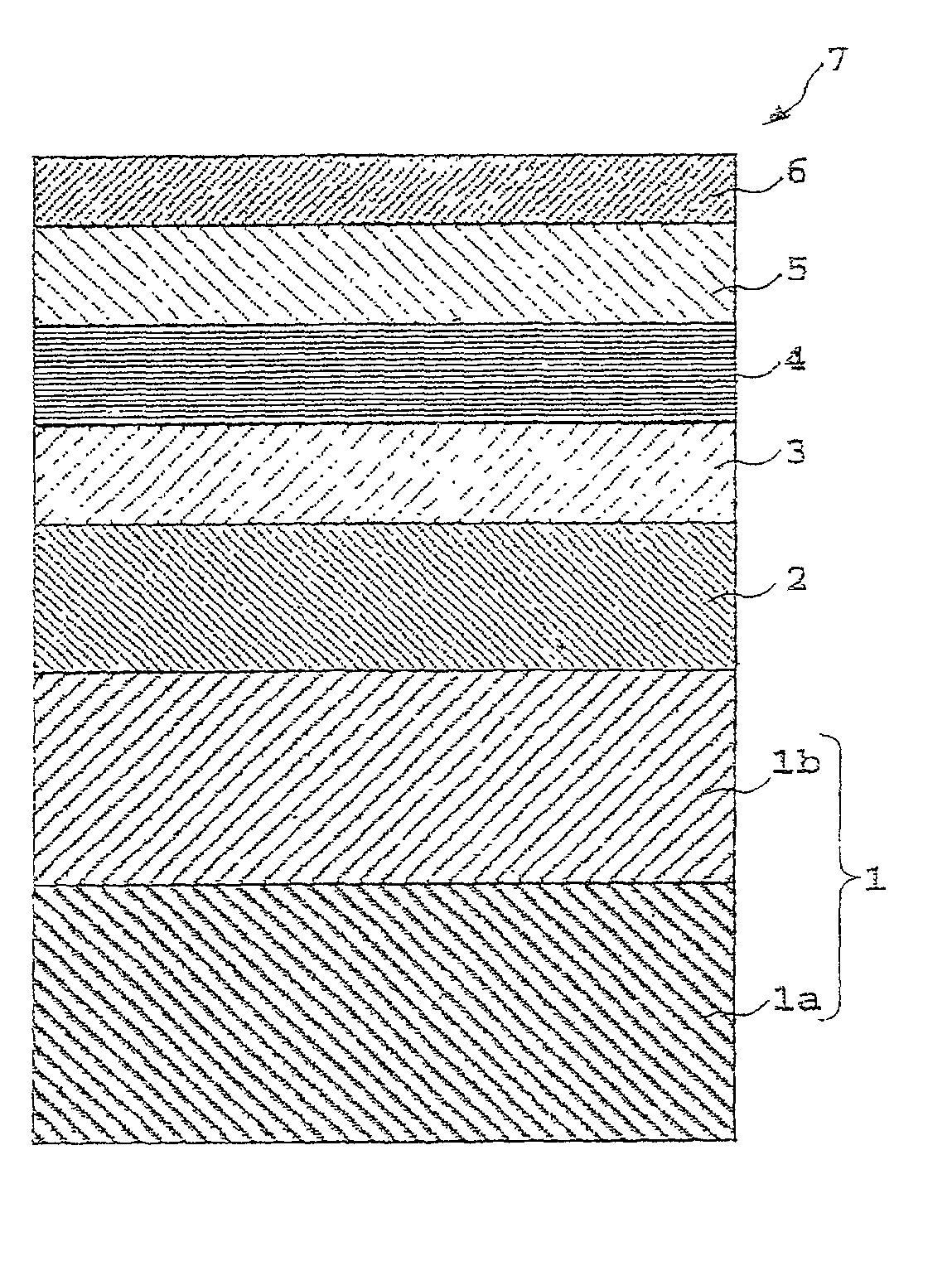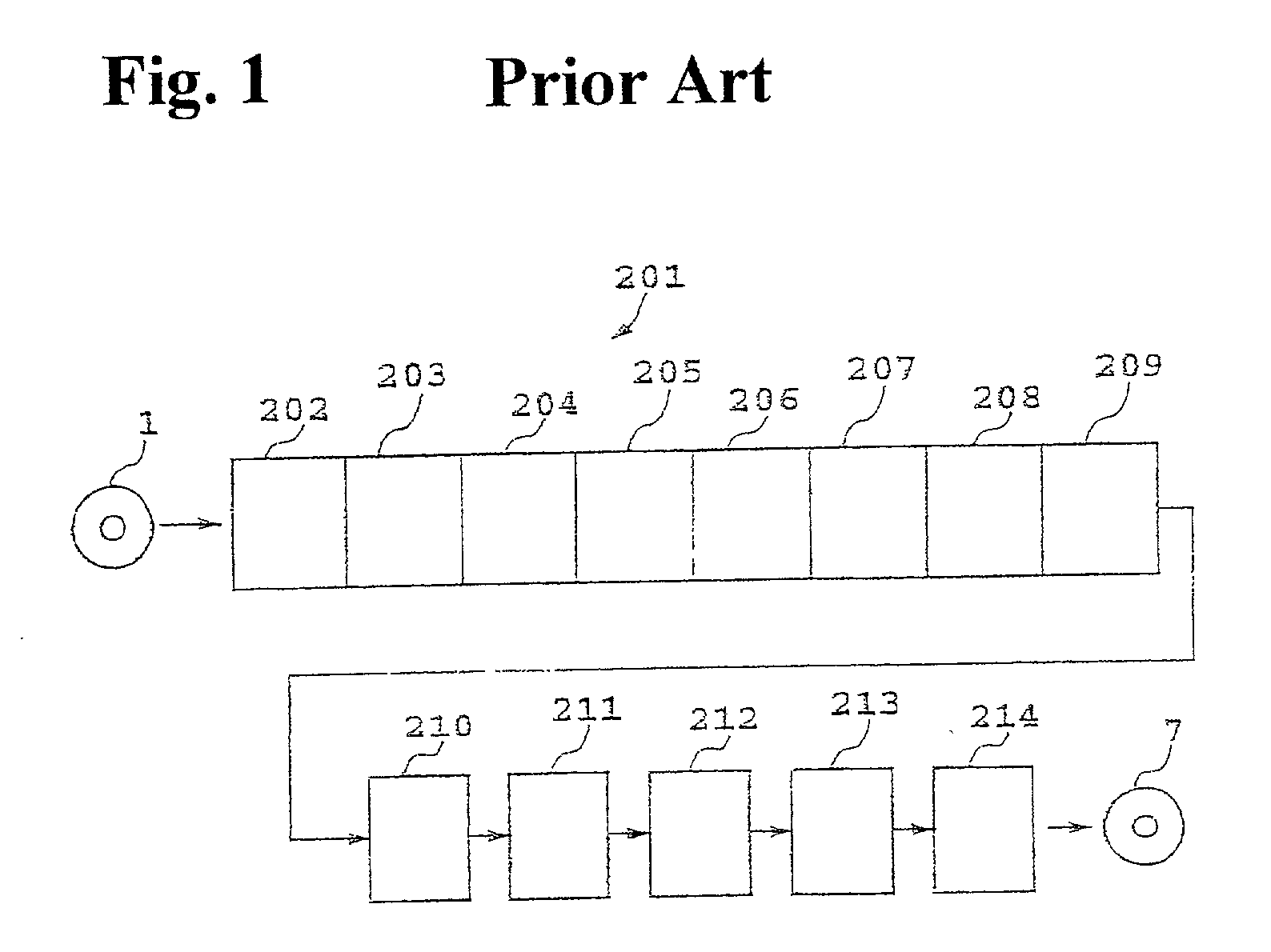Method for manufacturing thin-film magnetic recording medium
a technology of magnetic recording medium and manufacturing method, which is applied in the direction of magnetic recording layer, record information storage, instruments, etc., can solve the problems of further damage and stress on the concentrator, damage to the head or the magnetic recording medium 7 (or both), and reduce the process time. , the effect of reducing production waste and improving quality control
- Summary
- Abstract
- Description
- Claims
- Application Information
AI Technical Summary
Benefits of technology
Problems solved by technology
Method used
Image
Examples
first embodiment
[0089] Thin-film magnetic recording medium 7, resting on plasma-etched carbon protection layer 5, adopts the smooth surface, is not thereafter damaged and greatly reduces missing signal errors. Such a dramatic benefit may be attributed to the surface of thin-film magnetic recording medium 7, since there is no trace of polishing and initial application is on a smooth surface, and to the other dramatic effects of the present invention. As a result, it is not necessary to conduct burnishing after forming lubricant layer 6. This greatly reduces time and production costs and substantially prevents missing signal errors and collision of the magnetic head.
second embodiment
[0090] Second Embodiment
[0091] Thin film magnetic recording medium 7, is manufactured in the same way as in the first embodiment except that the process gas for vacuum plasma etching is a mixture of Ar, O.sub.2 and N.sub.2 where the mixing ratio thereof is approximately 6:1:3.
[0092] After etching carbon protection layer 5, the particles on the as-etched carbon protection layer 5 are counted before coating lubricant layer 6 as in the first embodiment. The results are described in FIG. 4 and designated by the letter E below the horizontal axis of the figure.
[0093] The missing signal errors are measured on magnetic recording medium 7 according to the second embodiment in the same way in the first embodiment. The average number of missing signals is 4.0 pulses per a surface and is shown by the letter E in FIG. 4.
[0094] It is clear that even with a process gas different from that of the first embodiment, thin-film magnetic recording medium 7 is as good as in the first embodiment.
third embodiment
[0095] Third Embodiment
[0096] Thin-film magnetic recording medium 7, according to a third embodiment of the invention, is manufactured in the same way as in the first embodiment except that the surface of carbon protection layer 5 is etched by DC plasma etching with oxygen ions for 3 sec under the following conditions. The electrode facing opposite to the laminate, having carbon protection layer 5, is a carbon electrode, having a DC voltage of -300 V applied. A process gas for the DC plasma etching is a mixture of Ar and O.sub.2, having a ratio of about 9:1. A bias voltage of +100 V is applied to the laminate.
[0097] After etching carbon protection layer 5, the particles on the as etched carbon protection layer are counted before coating the lubricant layer in the same way as described in connection with the first embodiment. The results are designated by the letter F in FIG. 4.
[0098] Missing signal errors are measured on magnetic recording medium 7 according to the third embodiment ...
PUM
| Property | Measurement | Unit |
|---|---|---|
| thickness | aaaaa | aaaaa |
| thickness | aaaaa | aaaaa |
| diameter | aaaaa | aaaaa |
Abstract
Description
Claims
Application Information
 Login to View More
Login to View More - R&D
- Intellectual Property
- Life Sciences
- Materials
- Tech Scout
- Unparalleled Data Quality
- Higher Quality Content
- 60% Fewer Hallucinations
Browse by: Latest US Patents, China's latest patents, Technical Efficacy Thesaurus, Application Domain, Technology Topic, Popular Technical Reports.
© 2025 PatSnap. All rights reserved.Legal|Privacy policy|Modern Slavery Act Transparency Statement|Sitemap|About US| Contact US: help@patsnap.com



